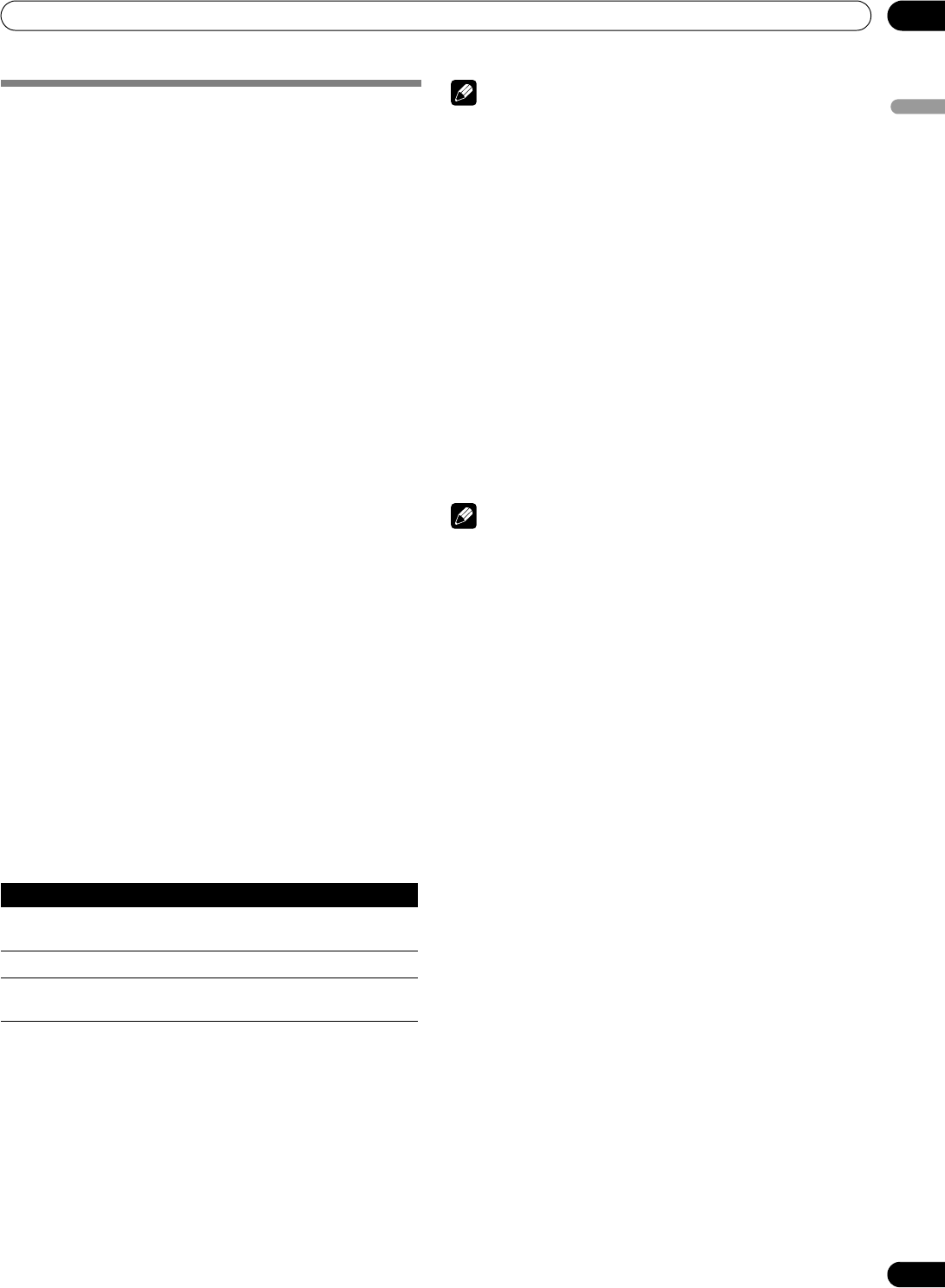
73
En
Using External Equipment
12
English
Enjoying the Home Media Gallery
With Home Media Gallery, you can enjoy digital content such
as movies, music and photo files. These files can be saved on
one or more media servers connected by a home network
(LAN) or from content stored on USB devices. After connecting
via an Ethernet hub to a media server with network software*,
you can navigate through the server’s digital content using the
Plasma Display. For USB interface, the Plasma Display
supports Mass Storage Class devices.
* Referred to as a “media server” that contains digital content
such as movies, music and photo files. PCs that have pre-
installed media server software and recorders with a media
server function are considered the media server. Use PCs that
have a Windows Media Connect (WMC) server or DLNA
compliant server for the Home Media Gallery function.
Take a Windows Media Connect (WMC) server for example:
Microsoft Media Server is freeware and works with any music
jukebox-type software, although is optimized for Windows
Media Player.
Installing Windows Media Connect
Before installing Windows Media Connect, make sure that
Windows XP SP2 and other required software are installed.
See Microsoft Website for details regarding minimum system
requirements and installation procedures.
1 Download the most recent version of Windows Media
Player
This can be downloaded either directly from the Microsoft
Website, or using the Windows Update Installer.
2 Download the most recent Windows Media Connect
software
This can be downloaded either directly from the Microsoft
Website, or using the Windows Update Installer.
Supported file formats
The table below shows supported file formats that can be
played back or displayed on the Plasma Display. These formats
are applicable to both network and USB sources. However,
media server content protected by digital rights management,
such as WMDRM10 (Digital Rights Management for Windows
Media 10), may not play on the Plasma Display.
• Some formats may not be supported depending on the
server type or version used.
NOTE
• Content may not play or display properly depending on the
conditions of use.
• Sources for this panel include media servers that support
DLNA (Digital Living Network Alliance) and Windows Media
Connect (WMC) running on the LAN network, or SD Card,
MS, MMC, xD Picture and CF that comply with the Mass
Storage File System through a USB interface.
• Supported formats and contents are subject to change. Visit
the Pioneer website for updated information:
http://www.pioneerelectronics.com
• The Home Media Gallery functions as a WMDRM10-ND
(Microsoft Windows Media DRM for networked devices).
Content can only be navigated from the media servers that
support WMDRM10-ND.
• The system may not be able to display content from
incompatible memory cards.
• You cannot use the Home Media Gallery until dimmed
elements on the menu screen turn white.
Digital Audio Output terminal (Optical)
NOTE
• When using the optical output terminal for networked audio or
video:
If the Plasma Display and audio system are in the same room,
you may experience an audio delay between the plasma
speakers and the audio system. Try muting the speakers on
the Plasma Display to correct this delay. However, this action
may cause delays between audio and video.
Type of files Format
Movie MPEG PS (mpg, mpeg, mpe, m2p), MPEG-2 TS/TTS,
WMV (asf, wmv), MPEG4 (mp4)
Music MP3 (mp3), LPCM, WAV (wav), WMA (asf, wma)
Photo JPEG (jpg, jpeg), BMP (bmp), PNG (png), TIFF (tif, tiff),
GIF (gif)
PDP_PRO1140HD.book Page 73 Monday, June 5, 2006 5:22 PM


















